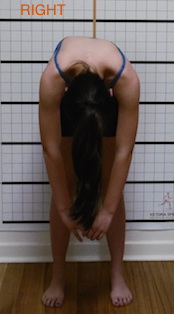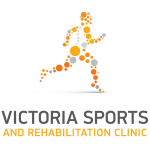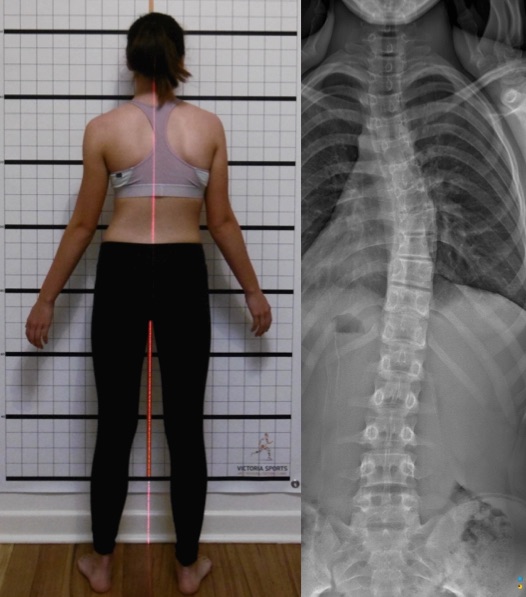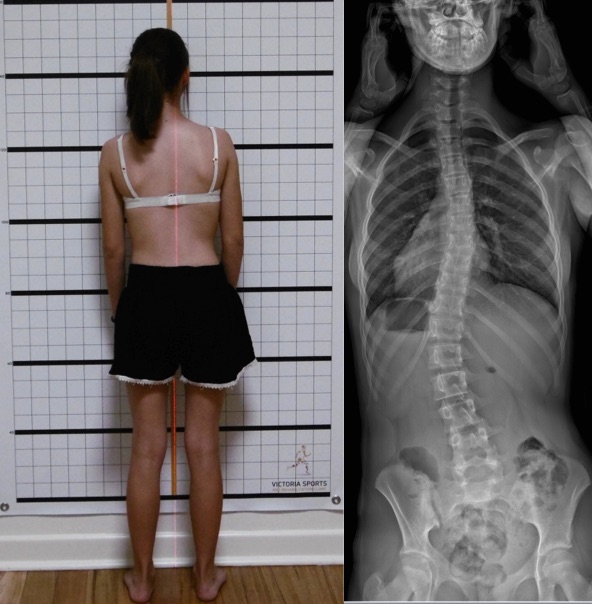Adolescent Idiopathic Scoliosis
Adolescent Idiopathic Scoliosis occurs in adolescents and has no known cause. This diagnosis is only formed when all other causes are excluded. It is the most common type of scoliosis representing approximately 80% of all cases. Females are approximately 4 times more likely to be affected by idiopathic scoliosis.1
Approximately 2.5% of the population have a scoliosis, though only 0.25% progress to the point of requiring treatment (Bracing, Scoliosis Specific Exercise).2
Curves can progress rapidly during an adolescent’s growth period and generally slow as the patient nears skeletal maturity. We are able to predict with some certainty the likelihood of the progression of a patients curve based on the age, skeletal maturity and current magnitude of curve.
There is a familial predisposition to idiopathic scoliosis, with 30% of patients reporting a family history.3 Studies have shown that when both parents have a scoliosis, their children have a 50 times increased risk of requiring treatment.4 Also if one child has a scoliosis the likelihood a sibling will have a curve ≥ 10 degrees is 19% and 11.5% ≥ 20 degrees.5

Figure 1 – Adam’s Forward Bending Test
Adolescent patients rarely experience pain with a scoliosis, though visible asymmetries are normally present when looking from behind and are the first indicator a scoliosis may be present. Some of the possible findings are listed below:
- Shoulder Height – one shoulder may sit higher than the other
- Shoulder Blade – one shoulder blade may sit higher than the other. Also the inside border may be more prominent
- Trunk Position – a shift of the trunk can be seen to one side
- Hip Prominence – one hip may be more prominent on one side. Appearing as though they are putting more weight onto that hip
- Head Position – the head may sit off to one side
- Rib Hump – this is a prominence of the ribs on one side. This is due to the rotation aspect of scoliosis (see Adam’s Forward Bending Test) – Figure 1
Figure 2: The above patient has a 3 curve. Her trunk is seen translating to the right. Her right shoulder blade is also more present. Her left hip is more prominent and her head is slightly right of the midline.
Figure 3: The above patient has a 4 curve. Her trunk is seen translating to the left. Her right shoulder is higher than her left. The lower border of her shoulder blade sits higher. Her right hip is more prominent and her head is to the left of the midline.
If you would like to know more about the difference between a 3-curve and a 4-curve scoliosis you can read more here
1 – Weiss, HR, 2015. Schroth Therapy: Advancements in Conservative Scoliosis Treatment. 1st ed. Germany: Lambert.
2 – Asher M, Burton D. Adolescent idiopathic scoliosis: natural history and long term treatment effects. Scoliosis 2006, 1:2
3 – Scoliosis Research Scoiety. 2016. Adolescent Idiopathic Scoliosis. [ONLINE] Available at:http://www.srs.org/patients-and-families/conditions-and-treatments/parents/scoliosis/adolescent-idiopathic-scoliosis. [Accessed 04 January 16].
4 – Reamy B, Slakey J. Adolescent Idiopathic Scoliosis: Review and Current Concepts. Am Fam Physician. 2001 Jul 1
5 – Wise C, Gao X, Shoemaker S, Gordon D, Herring J. Understanding Genetic Factors in Idiopathic Scoliosis, a Complex Disease of Childhood. Curr Genomics. 2008 Mar


